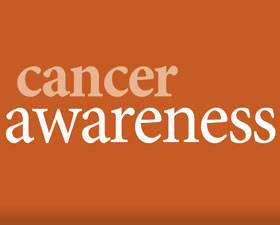What parents should know about childhood tumors
Cancer claims millions of lives across the globe each year. No one is immune from cancer, though some people, either due to genetics or certain lifestyle choices, are at greater risk than others.Among those with a low risk of developing cancer are children. Childhood cancer can occur, but it is generally rare. However, when cancer does strike in children, it comes in one of the two most common forms of leukemia or lymphoma. Leukemia begins in the blood-forming tissue and causes a large number of blood cells to be produced and enter the bloodstream, and lymphoma. The disease lymphoma begins in the cells of the immune system.
Brain and spinal cord tumors are the third most common type of childhood cancer. Their cause is unknown, and the symptoms of childhood brain and spinal cord tumors vary from child to child. That said, it's important for parents to understand brain and spinal cord tumors so they can be better prepared should their children begin to exhibit any symptoms.
How does a brain or spinal cord tumor form?
There are many types of brain and spinal cord tumors. But each type forms when there is an abnormal growth of cells. This abnormal growth can begin in different areas of the brain or spinal cord.
Are brain or spinal cord tumors benign or malignant?
A tumor on the brain or spinal cord does not always indicate cancer. According to the National Cancer Institute, some such tumors are benign. Benign tumors will grow and press on nearby areas of the brain, but these tumors rarely spread into other tissue.
Malignant brain tumors grow rapidly and spread into other brain tissue. As a malignant tumor grows into or presses on an area of the brain, that part of the brain it is growing into or pressing on may stop working as it's supposed to.
Whether a brain or spinal cord tumor is benign or malignant, some symptoms, including ones that are unpleasant, will occur, and the tumor will require treatment.
What are the symptoms of childhood brain and spinal cord tumors?
A tumor on the brain or spinal cord may cause uncomfortable symptoms for a child. However, the appearance of these symptoms does not necessarily mean a child has a brain or spinal cord tumor. The symptoms could be indicative of another condition.
Symptoms will also vary depending on where the tumor is. Symptoms of a childhood brain tumor include:
- morning headache, or headaches that go away after vomiting
- frequent nausea or vomiting
- vision, hearing and speech problems
- loss of balance and difficulty walking
- unusual sleepiness
- change in activity level
- unusual changes in personality or behavior
- increase in head size (in infants)
- seizures
Symptoms of a childhood spinal tumor include:
- back pain or pain that spreads from the back toward the arms or legs
- difficulty urinating
- a change in bowel habits
- weakness in the legs
- trouble walking
Children suffering from brain or spinal cord tumors may also be unable to reach certain growth and development milestones. This includes sitting up, walking and talking in sentences.
How do doctors determine if a child has a brain or spinal cord tumor?
There are several tests and procedures a doctor can employ to determine if a child has a brain or spinal cord tumor.
* Physical exam and history: A doctor may perform an exam of the body to check for signs of disease, including lumps or anything out of the ordinary. The doctor will also want to know the child's medical history, include past illnesses and treatments.
* Neurological exam: A neurological exam is a series of questions and tests to check the brain, spinal cord and nerve function. These tests will measure a child's coordination, his or her ability to walk normally and his or her mental status and will examine how well the muscles, senses and reflexes are working.
* Serum tumor marker test: During this procedure, a doctor will take a blood sample to measure the amounts of certain substances released into the blood by organs, tissue or tumor cells. Certain substances are linked to certain types of cancer, so finding more of them in the bloodstream can help the doctor make a more accurate diagnosis.
* MRI with gadolinium: This procedure will make a series of detailed pictures of the brain and spinal cord. The gadolinium is injected into the child's vein and will collect around the cancer cells so they appear brighter in the picture.
* CT scan: A CT scan, or CAT scan, is a procedure that takes a series of pictures of areas inside the body. These pictures are detailed and taken from different angles.
* Angiogram: This procedure focuses on the blood vessels and the flow of blood in the brain. A contrast dye is injected into the blood vessel, and as that dye moves through the vessel, pictures are taken to determine if there are any blockages.
* PET scan: This procedure is looking for malignant tumor cells in the body. Some radioactive glucose is injected into the body, and the PET scanner rotates around the body, taking pictures of where the glucose is being used. Malignant tumors take up more glucose than normal cells, so tumor cells will show up brighter in the picture because they are more active.
What happens if a child is diagnosed with a brain or spinal tumor?
The NCI notes that most childhood brain tumors are diagnosed and removed in surgery. A child's chance of recovery might be affected by a host of factors, including the type of tumor, the amount of cancer cells, if any, remaining after surgery, where the tumor was in the body, the child's age, and if the tumor was recurring or just diagnosed.
More information on childhood brain and spinal tumors is available at www.cancer.gov.



